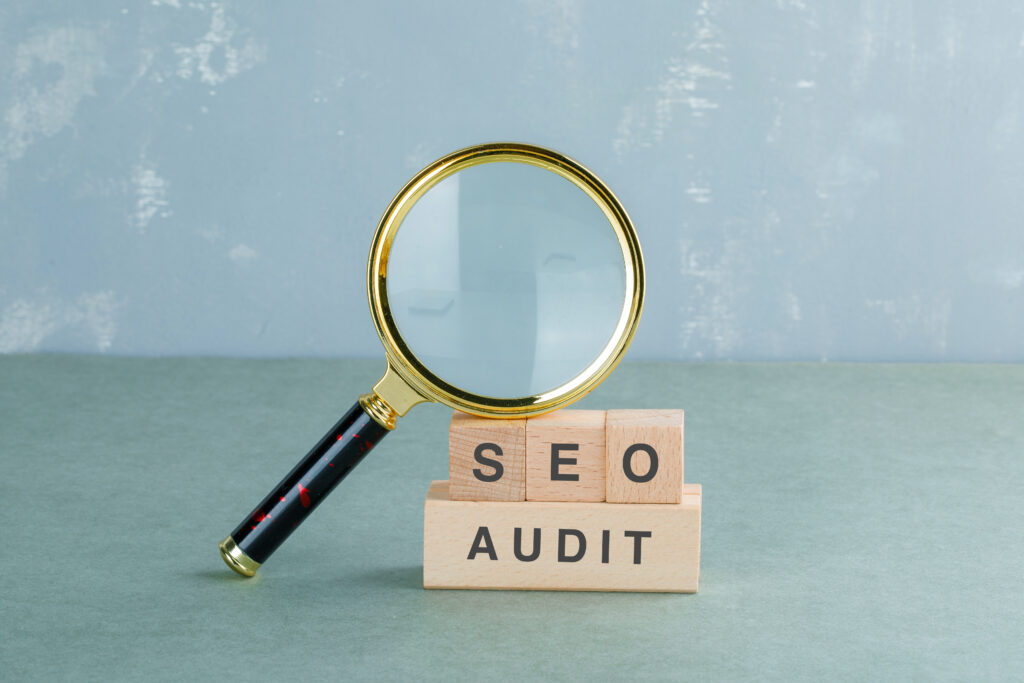
Auditing content is important to keep your website or blog always relevant to search engines. Understand!
Doing a content audit is imperative if you have a brand and want it to grow organically.
Right at the beginning, it’s common for your main focus to be on excellent content production. This strategy is very relevant, but other factors must also be analyzed in the long run.
Thus, it is necessary to constantly review the content, either to update it or to revisit a theme that can be reused.
For this reason, those who want to use the content marketing strategy for organic traffic also need to focus on the auditing part.
But What Is Content Auditing?
Content auditing can be defined as a thorough analysis of all the information on a blog or website.
First, it is essential to remember that a blog is one of the leading SEO strategies a brand can insert into its online platform.
As the SEO strategy undergoes updates and search engines are improved, the content audit serves to identify optimization points in what has already been published.
Also, in some cases, the content audit can point out materials that aren’t working on your site or attract visitors who don’t turn into leads. In this case, deletion of the material may be appropriate.
Indeed, content auditing can analyse a website’s numerical and contextual data. After all, a platform’s content should not be evaluated only by numbers.
Each contextual factor (market, timing of your brand, etc.) should be considered in the audit.
What Is The Importance Of Doing A Content Audit?
Conducting a content audit is essential for any brand that produces blogging.
With the rapid changes in criteria in Google’s ranking parameters and algorithm analyses, it is necessary to do research regularly.
This is because when you produce content for a blog, it is inevitable that, over time, the material needs to be revised. Whether for an update or to redo the structure with new, more appropriate elements.
The function of auditing is to do this thorough scan of what needs to be optimized and in what way.
Perhaps, for a text written five years ago, you only need a minor update, but other recent content has to be removed for being too repetitive.
It is worth mentioning that the quality of content is one of Google’s most important ranking factors. In other words, auditing is also a way to keep your content relevant and within the parameters of the search engine.
In addition to quality, blog maintenance is another way to acquire domain authority for your page.

Content Auditing: How Does It Work?
Since content auditing is done to optimize the material produced by a blog and/or website, this is one of the essential SEO tools.
Several alternatives exist if you want to invest in this strategy to enhance your brand.
Below, we’ve compiled some tips to help you develop an audit plan. Check them out!
1. Define Your Goals And Metrics
First of all, you need to set a clear goal. This is a way to help you be guided by the analyses that will be made.
Because of this, you can set goals of what you want to achieve and what aspects of your blog can be checked.
Analyzing the number of hits, keywords, content updates or removal, shares and comments, or famous CTAs is possible.
2. Have An Inventory Of Your Content
Another very important point is to make a complete inventory of all your content.
You can draw up an inventory based on internal and external links or the type of content produced.
A good tip is to start by listing your URLs and cataloguing the content in a spreadsheet in Excel or Google Sheets by category.
3. Do Data Collection And Analysis
With the content inventory ready, the next step is to perform all the data collection.
Some programs are capable of thoroughly scanning several different aspects of your blog.
Some well-known SEO metrics analysis options are Google Analytics, SEMrush, Google Search Console, Content Audit, and many others.
4. Put Together An Action Plan
You must put together a well-designed action plan based on the data analysis.
To do this, you can divide the content produced between:
- Maintain
- Update
- Optimize
- Rewrite
- Remove
Identify each piece of data well and separate all material between these base categories to create an effective action plan.
5. Optimize Your Content
This is the stage where you can use all your content auditing knowledge.
Do an overall analysis of the results obtained to measure new ways to achieve your goals in the long term.
From this identification, improving your next marketing strategies will be possible.
Remember that content optimization can involve multiple changes to an original post. It may be that you want to insert other keywords, update data that is already old, or add extra elements such as frames and images.
In addition, depending on the theme of a publication, it can be attractive to present video content – whether it is your production or that of youtubers.

Constant Improvement
Now that you know the basics of a content audit don’t waste time and set up your strategy!
As you have seen, the content of a blog needs to be seen as a living organism that adapts over the years to remain relevant.
It is from accurate data at hand that you will realize where the points of improvement of your content are.
So, with a good content audit, your website is ready to reach more and new visitors!
Count On Experts
Count on our team to help your portal be in the top positions of Google and other search engines. We have a team of content marketing experts who will audit your page.
Thus, choose the most suitable strategies for your blog. We can know which content should be updated, optimized, or removed through efficient analysis.
We use different SEO tools to help your page reach the top of search engines. With this, we implement the most appropriate keywords and relevant information, among other strategies.
New information and SEO rules will update old pages that are getting traffic. The latest pages, among the most accessed tops, will be reviewed and improved.
In addition, our team will analyze if the portal has bad pages and develop an action plan to improve them.
What We Do
Among our most used actions on our clients’ pages that give positive results are:
- Content optimization: we optimize metadata, internal and external links, and images according to SEO techniques. In addition, as needed, we insert images and videos;
- New formats: we create e-books and infographics, selecting the main information according to the theme;
- Content expansion: to generate more traffic and reduce bounce rate, we increase your content by aggregating pertinent information;
- Structure: the content will be structured following content marketing strategies. We insert H2, H3, and bullet points, among others.
- Content update: some content needs to be updated, and our team researches new statistics or details to make it attractive and meet the reader’s expectations;
- Elaboration of CTAs: to get more attention from your audience and turn the reader into leads, we create eye-catching CTAs. This contributes to improving the conversion rate of your page;
- 301 redirect: We redirect removed pages to pages with the same theme but still get traffic.
Want to know more? Get in touch to see how we can help you get to the top positions of search engines!